The glass that a beer is served in is much more than simply a way to drink the beer. In reality, the glass is an important component of the experience. Choosing the right glass can completely change the way that a person experiences a beer, helping to enhance the overall impression of the beer, as well as the way it looks and even the way it smells. The large number of different types of glasses available can make picking the correct glassware a little difficult, but it is well worth making the effort.
Table of Contents
Why Does Glassware Make a Difference?
Yes, it does, for a few reasons.
Head
One of the most important elements of a beer is its head, and this is particularly important when serving beer. The head of a beer (the foam that it creates) acts to trap many of the volatile compounds within the beer, compounds that would otherwise leave the beer. This includes many of the byproducts of yeast fermentation, alcohol, flavor compounds, as well as specific additions to the beer, such as spices.
The right glass helps to trap this head and ensure that it remains in place. This prevents these volatiles from escaping, which acts to improve the overall smell and taste of the beer.
Because beer styles are so different than one another, the way that the head responds to the glass will differ depending on the type of beer. Matching the style of beer to specific styles of glassware can really help to improve the experience of drinking beer, and it is not really as difficult to do as it seems.
Serving Size
An obvious feature that's often overlooked is simply that some beers cannot be (or should not be) consumed in large/small amounts. It's a tough chore to drink more than 10 oz of a high ABV beer, but 10 oz of a Czech Pilsner is just sad to think about. A “pint” is an arbitrary traditional amount of liquid, but it's the standard amount for anything not considered a high gravity beer.
Some beers are traditional drunk in 1-liter glasses, but you can usually do just as well with a few pints (and keep the beer cold while it's waiting for your next round). Imagine how silly that would look to put a 12 oz pour into a 20 oz glass!
Taste + Smell
The shape and size of a glass can affect how you are able to smell and taste a beer. A large percentage of what we taste is done through the nose, so being able to stick your schnoz in there can make a difference. Part of the appeal of drinking complex beers it o be able to fully enjoy the sensory experience, which includes the aroma!
You might also be surprised to find out that how a beer contact the glass can affect what volatile aromas are release (especially when considering hops).
Aesthetics + Tradition
Additionally, the glassware chosen can have other impacts on the beer, such as making the beer look better overall, which is certainly a positive thing if you are serving beer you have made yourself and want the best reception possible.
Beer lacing (the patterns of foam on the sides of the glass) can give insight into the quality and style of brew. Some glasses were designed specifically to enhance this feature, notably with the Belgian style beers.
If nothing else, having an appropriate glass for the right style of beer can enhance the overall experience, give you true insight into how millions of people around the world have been enjoying this magical drink for centuries.
Types of Glasses + Matching Beer
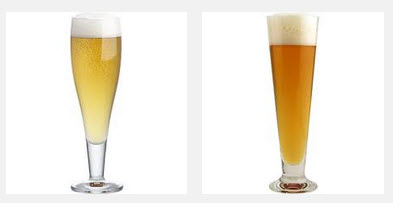
Flute Glass
This type of glass is often associated with champagne and is tall and narrow. Flute glasses tend to have shorter stems than traditional champagne glasses, but at the end of the day, the stem length isn’t really relevant. Even though this type of glass isn’t strongly associated with beer, it is a good match for some types of beer.
The advantages of this type of glass is that it acts to showcase and enhance carbonation, and releases volatiles quickly. This creates a more immediate and intense aroma.
Some styles that this glass is used with include: American/Belgian wild ales, lambic, Czech Pilsner, bock, some strong lager and German Pilsner. You don't see this type of glass a lot in the US, and it's use in Europe depends heavily on the type of place you're drinking. When I was in the Czech Republic, up-scale places always served their 12° Pivo in it. Get A Flute Glass Here
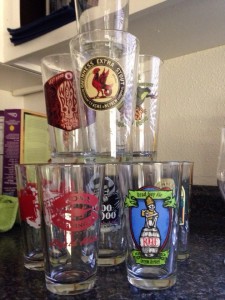
Pint Glass
Pint classes are very common and may either be 16-ounce and 20-ounce in size. The 20-ounce is more effective for accommodating beers, particularly ones that have large heads. There are many different styles of beer that are served in a pint glass, including traditional ales, IPAs, porters, stouts, and lagers. Really, you could drinking anything under about 8{a60bef903c54612bed20edb95d22500dcc3da56ac2b90be5eb4391998d03cdd5} out of a pint glass, and it's the default “go to” glass when you don't have anything else. There are many styles, and it's really fun to collect pint glasses from breweries you go to for a nice collection.
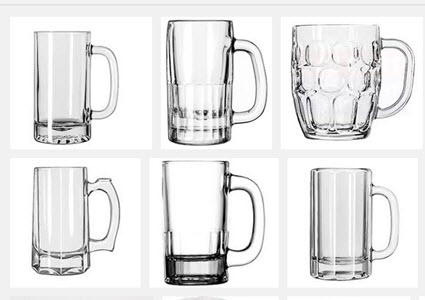
Mug or Stein
Mugs tend to be very heavy and sturdy are able to hold a large amount of liquid. The giant glasses have a variety of shapes and sizes, but the more well known kind is hard to forget. If you've ever been to Oktoberfest or even seen pictures of it, you'll know what I'm talking about. This is very suitable for German style beers, particularly lighter Pilsners. Hefes have their own glass, and if you drink anything above or so in these you'll be under the table after just 1.
In my opinion, these are hyped and not as useful as most other glasses. They are clunky, hard to drink from, and if you don't down your beer fast, it gets warm. Some styles of beer are meant to be drunk at warmer temps, but not the crisp lagers of Germany. However, the general population knows Oktoberfest and thinks “more is better” when it comes to beer, hence the popularity of this style. Get a 1 Liter Stein Here
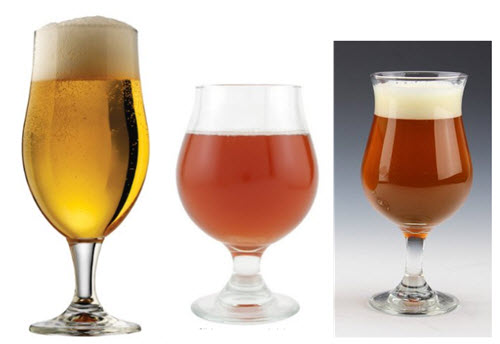
Tulip
This type of glass is tulip shaped and acts to enhance and capture the volatiles of beers, particularly those with foamy heads. I see these used for a lot of Belgian beers including stronger Belgian IPAs or pale ales, witbiers, sours, and lambic. They are also used for any high gravity beer like doppelbocks, doubles or imperials, and other types of “sipping” beers.
There are smaller and bigger versions, obviously the bigger versions will be for witbiers and lighter belgian ales, while the small ones will be for the high gravity beers. Get a Tulip Glass for High Gravity Beers Here. Get Tulip Glass for Lighter Beers Here.
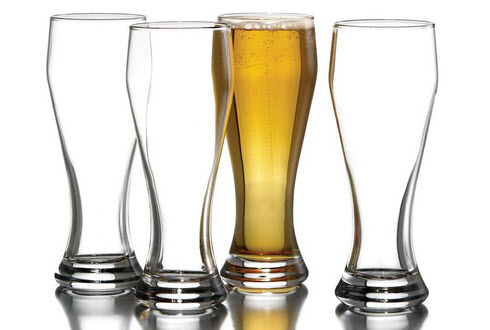
Pilsner Glass
This type of glass tends to be tapered, slender and tall and works well for capturing the colors and effervesces that is present within a pilsner. A pilsner glass does work well for many different pilsners, but it is also very relevant for a range of lagers. I think that taking a long, thirsty drink from this slender looking style of glassware adds to refreshing character of lagers. Get A Pilsner Glass Here
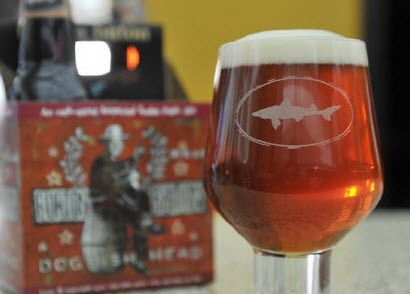
Chalice or Goblet
These glasses are often beautiful to look at and may be delicate or thick and heavy. These are particularly effective at maintaining the head of the beer, and their wide mouths allow for deep sips to be taken.
This type of glass works particularly well with Belgian strong dark Ale, Belgian IPA, Tripels, Dubbels and Berliner Weissbier. There isn't really a set “look” that all goblets subscribe to. Designs vary greatly, but you can get The Dogfish Head Signature Goblet on Amazon. They sell it on their website as well, but the shipping is more expensive, so the price works out to be the same.
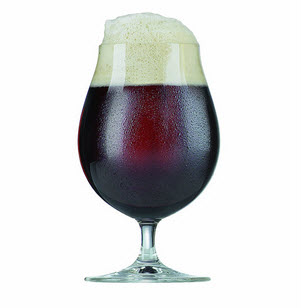
Snifter
Traditionally, snifters are used for cognac and brandy, but they are also relevant for some beers. Snifters have a wide bowl with a tapered mouth, and play a key role in capturing the aroma from strong ales. One of the nice things about snifters is that their design allows for the beer to be swirled, which enhances the volatiles. These are great for any complex beer that requires deep investigation! It's pretty much a tulip glass and can be used in the same manner.
There seems to be no true “beer snifter” to be bought, although TrueBeer has two they call the German Beer Snifter and the Super Snifter. What you'll see a lot in bars are actually congnac snifters. Because of this lack of true snifter and the confusion with glasses made for spirits, I think you can pretty much choose this one based on the look you like. Personally, I like the Stemmed Pilsner that you see a picture of above. It's big enough to work as a tulip for Belgian beers, but small enough to work for high gravity stuff, and perfect for tasting!
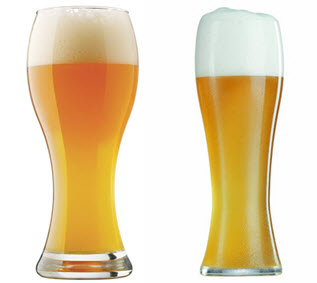
Weizen Glass
These glasses quite large in size, but tend to have thin walls and provide a way of showing the color of the beer. Traditional this glass was used to trap yeast at the bottom, hence the wide mouth and skinny bottom. This also allows for a large amount of head that usually forms because of the effervescent qualities of wheat beers. Get A Weizen Glass Here
Porter Glass
I don't really know what to call this one, but it's great for porters and stouts. It allows for a thick creamy head that sticks around for a long time. When you have a chocolate + coffee flavored porter/stout, drinking your beer through the thick and creamy foam enhances the dessert qualities of this beer. Get A Porter Glass Here
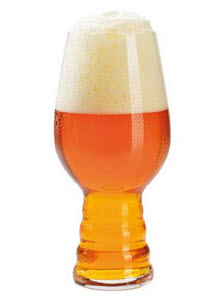
West Coast IPA Glass
This is a relatively new style of glass within the beer world. It was developed by the guys over at Dogfish Head, Sierra Nevada, and Spiegelau. You probably already noticed the strange ribbed bottom. This is SCIENCE man, and it was created like this to allow the beer to splash back into the glass and release more hop aroma. I covered this in my full review of the IPA glass after I bought them a few weeks ago.
The wide mouth on top is so you can really get your face in there and smell all that hoppy goodness. You don't see these much, and it's a great conversation piece for any person with beer-loving friends. Get your IPA glass here.
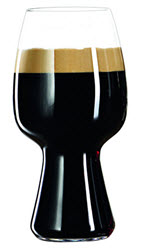
Stout Glass
This is a new one! Specially designed by Rogue, Left Hand, and of course Spiegelau, this glass was crafted for drinking stouts. I guess they've got a glass for just about everything these days. After the success of the IPA glass (featured above), Spiegelau went ahead and did another. Though it looks like a similar shape, side by side with the IPA they are quite different in height, bowl shape, and of course the base.
You don't hear much about this one. IPAs are much more popular, especially in the US which is probably a contributing factor. Plus, this was the ‘second arrival' of new glassware this decade, so some of the wind might have been taken from its sails. I haven't written the review yet, but it's coming soon! You can get a set of 2 stout glasses, and this one gets free shipping for Prime members!
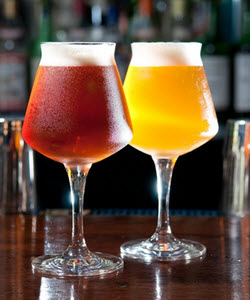
Specialty Beer Glasses
Aside from glass boots and other novelty items, there are some specialty glasses that would be a great addition to any collection, or for a specific style of beer that's meant to be enjoyed by a very specific style of glass. Some of the one I've seen are the thistle for Scotch Ales, a schooner for wheat beers, and TeKu, an glass that's “designed by Italian beer experts, engineered by legendary German glassmakers”. And we can't forget the nonic English pint glass that's used for English ales and lagers (it's one of my favorites).
UPDATE: I bought and reviewed the TeKu beer glass. It looks and feels pretty awesome.
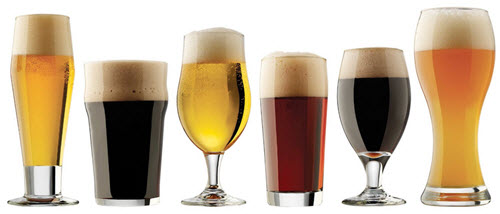
Beer Glass Sets
The set of 6 beer glasses shown above this paragraph and at the top of the post is part of a set that I bought recently. I was very surprised at the level of quality of these glasses. There were a lot of glasses featured here today, and if you bought them all, it could cost you a few hundred dollars. Trust me, I looked into it. The Libbey Craft Beer Glass Set (links to full review) is a great way to start your collection, hitting all the basic styles: porter/stout, pint, nonic English pint, weizen, tulip, and pilsner.
If you learned one thing today, it should be that craft beer is pretty much never drunk from the bottle unless you don't have a choice, There's a lot happening when you pour a beer, and a lot more can happen if you pour it into the right glass.
Leave a Reply